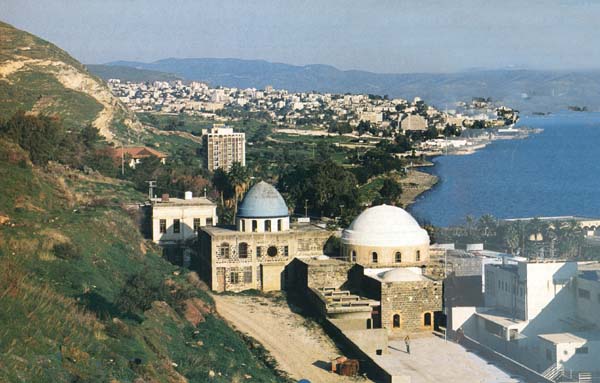Image Details

Zev Radovan
Tiberias old and new. The ancient city stood in what is now the undeveloped area between modern Tiberias (top) and Hammath Tiberias (“Tiberias Hot Springs,” bottom), home of the therapeutic waters that for centuries have drawn visitors seeking to relieve creaking bones and aching muscles. Mt. Berenice, site of the royal palace of Antipas, son of Herod the Great, rises nearly 650 feet above the Sea of Galilee at upper left in the photo.
An important Jewish center from before the Roman destruction of the Jerusalem Temple until the Middle Ages– a span of more than 1,000 years–ancient Tiberias was also a major city in the area closely associated with the ministry of Jesus. The Gospel of John twice refers to the Sea of Galilee as the Sea of Tiberias (John 6:1 and 21:1) and mentions fishing boats from the city (John 6:23).
Despite its importance, large-scale, systematic excavations at Tiberias began only in the fall of 1990. Yizhar Hirschfeld, director of the dig, outlines the history of the city, explains what is already known about the archaeology of Tiberias and discusses where the excavators will be working–and what they will be looking for.
